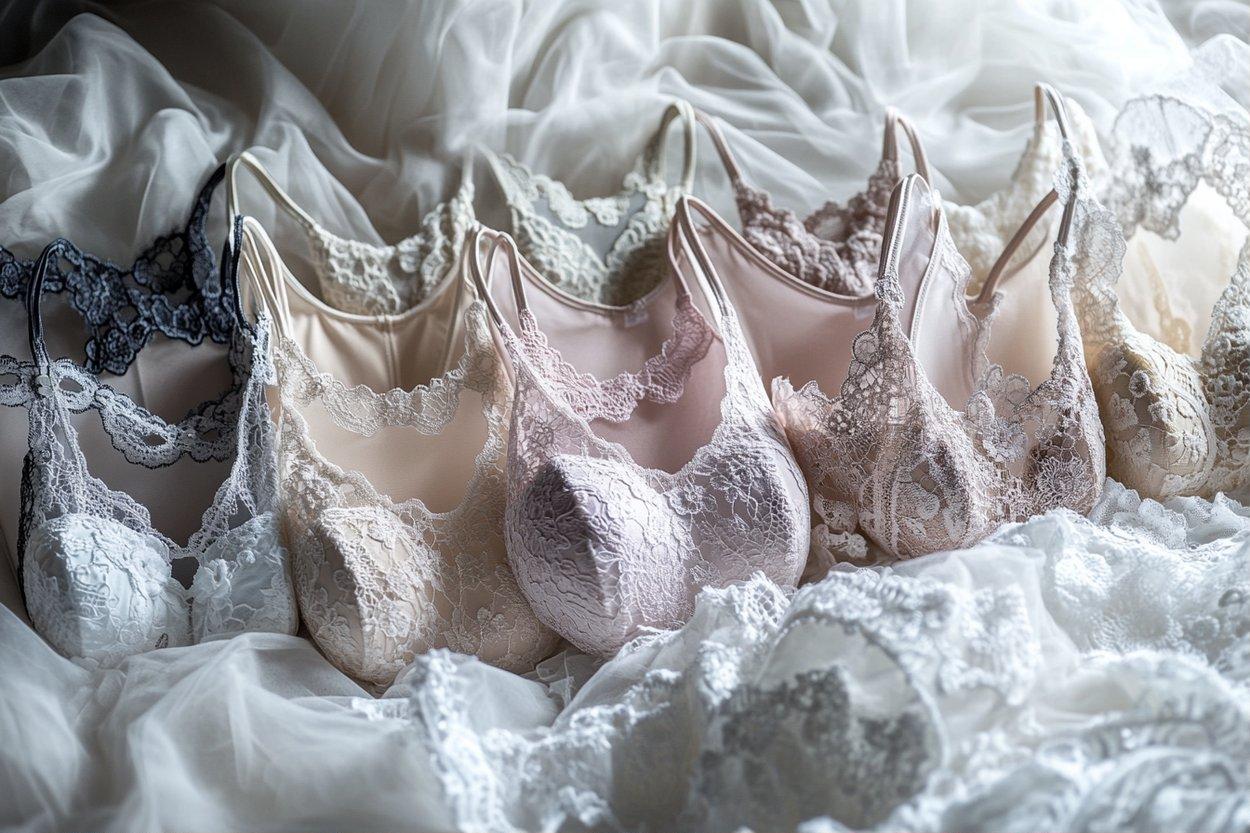Silk and Lace Knickers: Practical Guide to Materials, Fit, Care, and Sustainability
Silk and lace knickers represent a perfect blend of luxury and comfort in intimate apparel. Understanding the properties of these delicate materials, proper sizing techniques, and maintenance requirements helps you make informed choices about quality undergarments. This comprehensive guide explores everything from fabric construction to sustainable sourcing, ensuring your investment in premium intimate wear delivers both comfort and longevity.

Choosing the right intimate apparel involves more than aesthetics. Quality silk and lace knickers offer unique benefits when you understand their construction, proper fit, and care requirements. These materials have been cherished for centuries, combining natural properties with intricate craftsmanship to create garments that prioritize both comfort and elegance.
Materials and Construction: Understanding Silk and Lace Fabrics
Silk fabric derives from natural protein fibers produced by silkworms, creating a smooth, breathable material with temperature-regulating properties. The construction process involves weaving these fibers into various weights, from lightweight charmeuse to structured crepe de chine. Mulberry silk, considered the highest quality, offers exceptional durability and lustrous appearance.
Lace construction involves intricate patterns created through various techniques including bobbin lace, needle lace, or machine production. French Chantilly lace features delicate floral patterns, while Alençon lace incorporates raised cord outlines. Modern stretch laces blend traditional patterns with elastane fibers, providing flexibility without compromising the decorative appeal.
The combination of silk and lace requires careful engineering to maintain structural integrity. Reinforced seams, cotton gussets, and strategic placement of stretch panels ensure the garment maintains its shape while providing necessary support and comfort.
Sizing and Fit: How to Choose the Right Knicker Cut and Size
Proper sizing begins with accurate measurements of your waist and hip circumference. Most manufacturers provide sizing charts that account for different body types and preferred fit levels. Brazilian cuts sit lower on the hips, while high-waisted styles provide more coverage and support.
Fabric stretch significantly impacts fit selection. Pure silk offers minimal stretch, requiring precise sizing, while silk blends with elastane provide more flexibility. Consider your body’s natural curves and movement patterns when selecting between different cuts like bikini, brief, or thong styles.
Try-on guidelines suggest checking for proper leg opening placement, waistband comfort, and gusset positioning. The fabric should lie flat against your skin without creating visible lines under clothing. Seams should not dig into your skin, and the waistband should sit comfortably without rolling or sliding.
Care and Maintenance: Washing, Drying, and Storage Guidelines
Hand washing remains the safest method for silk and lace knickers. Use lukewarm water with pH-neutral detergent specifically designed for delicate fabrics. Avoid bleach, fabric softeners, or harsh chemicals that can damage natural fibers or intricate lace patterns.
For machine washing, use a mesh laundry bag on the delicate cycle with cold water. Select the shortest wash time available and ensure other garments in the load are similarly delicate to prevent snagging.
Drying requires careful attention to prevent damage. Never wring or twist wet garments. Instead, gently press between clean towels to remove excess water. Air dry away from direct sunlight or heat sources, which can cause silk to become brittle or fade.
Storage involves folding garments carefully or hanging them in breathable garment bags. Cedar blocks or lavender sachets provide natural moth protection without harsh chemicals. Avoid plastic storage containers that can trap moisture and promote mildew growth.
Comfort and Performance: Breathability and Everyday Wearability
Silk’s natural properties include moisture-wicking capabilities and temperature regulation, making it suitable for various climates and activity levels. The smooth surface reduces friction against skin, preventing chafing during extended wear.
Lace panels provide ventilation while maintaining coverage, creating breathable zones that enhance comfort. Strategic placement of solid silk panels offers support where needed while allowing airflow in other areas.
Seam construction significantly impacts daily comfort. French seams or laser-cut edges eliminate bulk and reduce visible lines under fitted clothing. Flat-lock stitching prevents irritation while maintaining durability.
Consider your lifestyle when selecting styles. Active individuals may prefer seamless construction and moisture-wicking properties, while those prioritizing aesthetics might choose more decorative lace patterns with additional detailing.
Sourcing and Sustainability: Ethical Materials and Production Considerations
Sustainable silk production focuses on ethical treatment of silkworms and environmental responsibility. Peace silk or ahimsa silk allows moths to complete their life cycle naturally, though this process affects the continuous fiber length and final fabric properties.
Organic silk production eliminates pesticides and chemicals from the farming process, creating safer conditions for workers and reducing environmental impact. Certification programs like GOTS (Global Organic Textile Standard) provide verification of sustainable practices.
Lace production sustainability depends on fiber sources and manufacturing processes. Organic cotton lace, recycled polyester options, and TENCEL™ lyocell blends offer more environmentally conscious alternatives to conventional synthetic laces.
| Brand | Material Composition | Price Range | Sustainability Features |
|---|---|---|---|
| Cosabella | Silk/Lace blend | $45-85 | Italian-made, sustainable packaging |
| Fleur du Mal | 100% Silk with French lace | $75-150 | Ethical sourcing, small-batch production |
| Araks | Organic silk | $60-120 | GOTS certified, carbon-neutral shipping |
| Baserange | Bamboo silk blend | $40-80 | Sustainable materials, minimal waste |
Prices, rates, or cost estimates mentioned in this article are based on the latest available information but may change over time. Independent research is advised before making financial decisions.
Quality silk and lace knickers represent an investment in comfort, sustainability, and craftsmanship. Understanding material properties, proper care techniques, and ethical sourcing helps you make informed decisions that align with both personal preferences and environmental values. With proper selection and maintenance, these garments provide long-lasting comfort while supporting responsible manufacturing practices.




